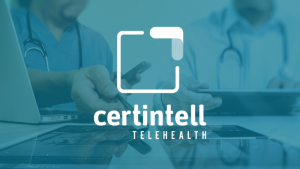The Quintuple Aim is a framework that is meant to optimize the healthcare system by focusing on five main goals: reducing costs, enhancing patient experience, improving population health, promoting health equity, and improving the work life of healthcare providers (including auxiliary staff).
Remote Patient Monitoring (RPM) is a great way to address the Quintuple Aim, given its flexible nature and ability to produce high Return-On-Investment (ROI), in a variety of ways. In this article, explore how RPM services can help you hit each of the four Quintuple Aim targets, and what you can do to implement them in practice, seamlessly.
Goal 1: Reduce Costs

In a value-based care environment, reducing costs is no doubt one of the biggest, if not the most stressful, goals to achieve. Luckily, with RPM, the cost-savings naturally follow.
The University of Mississippi Medical Center (UMMC), found that through RPM technology they were able to achieve a cost savings of more than $28,000 for just 100 patients in its first year of implementation.¹ They also found that they were able to reduce healthcare costs by $3,400 per patient per year by using RPM services.¹
These cost-savings could be attributed to the demonstrated correlation between health outcome improvement and health care cost reduction. The United States currently spends the most per capita on health care than any other country. Despite these large daily expenditures, the nation still faces significantly lower health outcomes. RPM works to change this narrative. Because RPM can be considered a type of preventative care measure, both clinicians and patients are given the tools needed to be proactive in a care plan. During an RPM program, the patient is responsible for gathering their vitals, which can then be sent automatically to the provider. This simple daily act increases awareness for patients about how daily habits might affect their routine readings. They can then have the power to make small lifestyle changes that lead to big health changes, rather than waiting until the problem worsens. Equally, providers and health coaches can work to monitor patients and flag the system for any concerning readings. Without RPM, patients and clinicians stay disconnected, which can lead to increased hospital visits or worsened conditions that require more time and resources than a proactive approach, such as RPM, would’ve taken.
A community health center’s average daily cost per patient is lower when compared to a hospital setting.² Keeping patients in familial, proactive settings such as CHCs, decreases health care expenditures while maintaining a healthy patient-provider rapport.
Vendors such as Certintell can partner with your organization to make RPM services accessible to a variety of patient populations, maximizing your financial ROI when mapping your Quintuple Aim targets.
Goal 2: Improve Patient Experience
Along with reducing costs, RPM also enhances the patient experience, completing the second Quintuple Aim goal. Healthy, connected patients are happy patients after all! Some ways that RPM augments the patient’s clinical experience is by:
► Improving patient self-management of care and self adherence
► Adding convenience of time and place for patients, as there’s no need to travel or take time off work
- DID YOU KNOW 3.6 million people in the US do not use medical care because of transportation barriers!³
► Increasing access to care for rural patients
► Boosting patient engagement
► Improving patient satisfaction
► Improving the relationship between patient and clinician
All of these reasons give patients access to quality care that caters to both their needs and wishes. Certified Health Coaches, such as those under the Certintell umbrella, work with the patient to fulfill these needs and drive behavior change. Common difficulties that often block access to care include transportation barriers, clinician shortages, and limited or incomplete knowledge of a patient’s health conditions and medical history.
Patients can feel comforted knowing that health coaches and clinicians are collaborating with the patient’s wellbeing in mind. RPM allows for all parties to communicate and stay in agreement to any changes in care plans.
Goal 3: Improve Population Health

Completing Quintuple Aim goals has a domino-like effect. Improvement in one area naturally leads to improvement in another. Reducing costs and strengthening the patient experience can progress your clinic’s population health outlook.
Population health, the concept of analyzing health outcomes for groups of people instead of on an individualized patient basis has been shown to better identify high risk patients, improve patient outcomes, and deliver effective care. Population health, according to the Centers for Disease Control and Prevention (CDC), is “an interdisciplinary, customizable approach that allows health departments to connect practice to policy for change to happen locally.”⁴
Population health encourages lifelong health behavior changes that, along with RPM, can be a great way for patients and clinics to see improvement in their overall health. One consulting group produced a report that found that increased emphasis on population health management has increased the use of RPM solutions; upwards of 66 percent of hospitals and health systems have implemented RPM services to improve their population health.⁵
RPM is an optimal population health solution, especially for chronic disease, because it offers healthcare providers several benefits, two of which are: better data for improved outcomes and increased patient engagement. As many health systems have discovered, data leads to action. Data gleaned from RPM can be extremely insightful as to who a clinic’s high risk patients are, what care tactics seem to improve their health outcomes, and what future supports could they use to excel.
Furthermore, crafting a population health program with the help of RPM devices allows for real-time readings and increased patient outreach and participation in preventive care services such as Annual Wellness Visits (AWVs) and Health Risk Assessments (HRAs). All these small elements work together to create a more hopeful image for your patients’ health.
Certintell can work with you to provide quality care specific to your populations’ needs.
Goal 4: Improve the Work Life of Healthcare Providers

All of the improvements mentioned above are great, though in order to provide the best patient care, health systems must also take care of the clinicians’ needs as well. Recent years have been a time of advocacy for clinicians as they reel from a grueling period in a pandemic-driven world. These clinicians are exhausted. Providers have recently taken to online and in-person spaces to speak out against burnout and what factors cause it.
A quick glance at the state of burnout in the U.S.:
-
46 percent of physicians reported burnout from their jobs due to the disparity between expectations and reality.⁶
-
A study conducted by the Harvard Business School found that physician burnout costs the U.S. health system upward of $4.6 billion a year in billings because of reduced hours, turnover rates and replacement and rehire expenses.⁷ The researchers reason that this number is most likely an underestimate as it doesn’t account for increased medical errors and malpractice lawsuits as a result of burnout, or decreased care quality.⁷
-
However, 31 percent of physicians believe provider burnout can be reduced by more manageable work hours.⁸
The convenience of telehealth and RPM affords providers more flexibility in scheduling their work day. As a result, the annoyances of no-shows are greatly reduced and administrative battles are more easily conquered. Additionally, having health data prior to seeing the patient can allow the provider to move from diagnosis to treatment more confidently, which could expedite the treatment plan. Eliminating the guessing game proves effective for both patient and provider.
Goal 5: Promoting Health Equity
Health equity can be defined as “The state in which everyone has the opportunity to attain full health potential, and no one is disadvantaged from achieving this potential because of social position or any other socially defined circumstance.”⁹ Promoting solid health equity includes ensuring that every patient has a fair opportunity to achieve their highest level of health, regardless of their socioeconomic background. This requires healthcare providers to recognize health disparities and apply evidence-based interventions to actively reduce them. An example of this could be the adoption of telehealth and various RPM strategies to enhance access to quality healthcare for patients from all backgrounds.¹⁰
How Certintell Can Help
Your most complex problems are best solved with a partner by your side! If your organization is targeting the Quintuple Aim, let Certintell help alleviate your burden. As a leader in RPM for underserved populations, we can help you align your Quintuple Aim goals, while helping you navigate financial and time constraints.
SOURCES:
¹Innovations, C. (n.d.). Mississippi telehealth network could be FCC’s model for RPM expansion. Mississippi Telehealth Network Could Be FCC’s Model for RPM Expansion. Retrieved September 15, 2022, from https://news.careinnovations.com/blog/mississippi-telehealth-network-fcc-model-for-remote-patient-management
² National Association of Community Health Centers. (2018) Community Health Center Chartbook. Retrieved from http://www.nachc.org/wp-content/uploads/2018/06/Chartbook_FINAL_6.20.18.pdf
³ Social Determinants of Health Series: Transportation and the role of Hospitals: AHA. American Hospital Association. (2017). Retrieved September 15, 2022, from https://www.aha.org/ahahret-guides/2017-11-15-social-determinants-health-series-transportation -and-role-hospitals
⁴ Centers for Disease Control and Prevention. (2020, October 6). What is population health? Centers for Disease Control and Prevention. Retrieved September 15, 2022, from https://www.cdc.gov/pophealthtraining/whatis.html
⁵ RPM will be the new standard of care, a new study says. Healthcare IT News. (2021, November 4). Retrieved September 15, 2022, from https://www.healthcareitnews.com/news/rpm-will-be-new-standard-care-new-study-says
⁶ Bodenheimer, T., & Sinsky, C. (2014). From Triple to Quadruple Aim: Care of the Patient Requires Care of the Provider. Ann. Fam. Med., 12(6), 573–576. doi: 10.1370/afm.1713
⁷ Powell, A. (2019, July 15). Doctor burnout costs health care system $4.6 billion a year, Harvard Study says. Harvard Gazette. Retrieved September 15, 2022, from https://news.harvard.edu/gazette/story/2019/07/doctor-burnout-costs-health-care-system-4-6-billion-a-year-harvard-study-says/
⁸ Nearly half of physicians experience burnout. (2019, May 16). Retrieved from https://www.healio.com/internal-medicine/practice-management/news/online/%7B9152dd77-94ed-4c8d-88f9-b68857460f49%7D/nearly-half-of-physicians-experience-burnout
⁹ National Academies of Sciences, Engineering and Medicine. “Communities in Action: Pathways to Health Equity.” National Academies Press, 2014. https://www.nap.edu/download/24624
¹⁰ Nundy, S., Cooper, L. A., & Mate, K. S. (2022). “The Quintuple aim for health care improvement.” JAMA, 327(6), 521. https://doi.org/10.1001/jama.2021.25181



